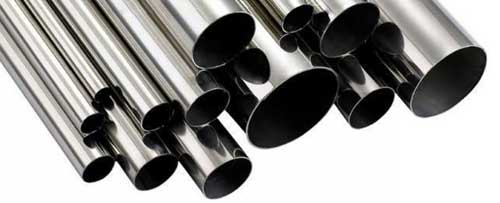Microbiologically Induced Corrosion (MiC) |
What is Microbiologically Induced Corrosion?
The term "corrosion" describes a number of processes driven by a wide range of electro-chemical factors. At the root of these is the inherent instability, at the atomic level, of most industrial metals, which predisposes them to return to their naturally occurring form, oxides.

One of the more unusual forms of corrosion results from the interaction of bacteria with a wide range of metals and alloys. Microbiologically Induced Corrosion (MIC) technically functions as an accelerant to more conventional corrosion processes. The rate of acceleration, however, may be from 10 to 1000 times conventional corrosion rates, requiring that MIC be addressed as a distinct corrosion process from a practical standpoint.

MIC initiates and propagates primarily by two processes. The first is the formation of corrosion cells on a metal surface. Colonies of micro-organisms generate sticky biofilms with which they adhere to their host surface and create a micro-environment that is significantly different from the surrounding metal. Variations in dissolved oxygen, pH, and organic and inorganic compounds in these micro-environments result in electrical potential differences with the surrounding metal, producing highly active corrosion cells.The second is by direct chemical attack. The metabolic by-products of many micro-organisms are highly corrosive. Two related organisms-sulfur reducing bacteria (Disulfovibrio) and sulfur oxidizing bacteria (Thiobacillus thiooxidans)-produce hydrogen sulfide and sulfuric acid respectively. Localized sulfuric acid concentrations from these by-products as high as 10 percent have been observed. Other bacteria species produce a wide range of organic acids, as well as ammonia.

Both aerobic bacteria, which thrive in an oxygenated environment, and anaerobic bacteria, which thrive in a minimal or non-oxygen environment, have been documented in MIC. In some cases, these two bacteria types share a symbiotic relationship, as aerobic bacteria deposit biofilms under which an oxygen-depleted zone is formed at the metal interface. This oxygen-depleted zone then becomes an ideal environment for the growth of anaerobic bacteria colonies.

The formation of tubercles is also often associated with MIC. Tubercles resemble blisters of corrosion product and are initiated from biofilm deposits and iron oxidizing bacteria, particularly at low flow velocity areas in fluid piping systems. The growth and decomposition cycle of the tubercle releases sulfates and provides a site for anaerobic sulfate-reducing bacteria on the interior of the blister. Tubercles also form an efficient oxygen concentration cell, dissolving iron under the blister. Unchecked tubercle growth in fluid transport systems will severely limit or even completely block fluid flow.

Contact of the metal's surface with water is a pre-condition to MIC. Since the bacteria species responsible for MIC pose no human health risk, "safe" drinking water systems are just as much at risk as non-potable water systems. Cooling systems and heat exchangers, wells, fire and agricultural automatic sprinkler systems, and liquid storage tanks are among the more obvious potential sites for MIC to develop. However, fluid products not normally associated with water, such as gasoline, oil, and machining and cutting lubricants all contain at least trace levels of water, which are sufficient to support bacteria that initiate MIC. Virtually all processed fluid products, including food and beverage, petrochemical, and other commercial and industrial products also contain varying amounts of water and are susceptible to MIC.

MIC occurs as both general corrosion and pitting corrosion, though localized pitting is the more definitive form and more likely to result in dramatic system failures. Low flow areas in circulating systems such as heat exchangers and process piping are particularly susceptible since these "stalled flow" locations provide bacteria with the opportunity to attach to the tube or pipe surface. At both microscopic and macroscopic features, fluid flow "stalling" occurs at any crevice, joint, weld, or imperfection, and these are typical locations for MIC. Interrupted flow in circulating fluid systems, such as weekend, over night, or even brief maintenance shutdowns, also provides the opportunity for bacterial adhesions and the initiation of MIC.

Once the bacteria are established, the corrosion process will proceed even after flow is restored. Hydro-static testing, in which a system is filled with fluid, pressurized, leak tested, and drained-but often not completely dried-is a sequence repeatedly seen in the initiation of MIC failures. This testing usually immediately precedes placing the system in service, and failure may not occur for several months. When failure does eventually occur, the hydrostatic test and stagnant fluid residue are often overlooked and, as such, the failure is misdiagnosed as chloride induced corrosion.

Static fluid systems, such as sumps and storage tanks are receptive environments for MIC. Corners, fittings, joints and welds are again vulnerable and in the case of fuels and non-water soluble fluids, the interface between the fluid and any water contaminant is particularly susceptible. MIC in underground storage tanks and pipelines, particularly in moist clay soils, has been widely observed despite protective tar, asphalt or polymeric coatings. While effective in preventing conventional corrosion, any delamination or bond failure of the coating provides an ideal bacterial growth environment.
Virtually all industrial metal alloys are subject to MIC, with the exception of titanium alloys. Testing suggests that the few stainless steel alloys containing molybdenum at levels of 6 percent or more are also highly resistant to MIC. These limitations severely restrict material substitution as a strategy to mitigate MIC.
Metal Alloys and Their Susceptibility to Corrosion
Carbon Steels-Generally susceptible to conventional corrosion processes, carbon steels are also widely affected by a broad range of MIC implicated bacteria. Considerations of cost and ease of fabrication make carbon steel the material of choice in many water storage and transport applications, as well as the most widely reported material in MIC failures. Protective coatings generally have limited preventive value.
Stainless Steels -- These alloys develop tough chromium oxide surface layers from which they derive their corrosion resistance. Once the oxide layer is breached, however, they are particularly vulnerable to both conventional and MIC corrosion. Welds are highly susceptible due to potential alloy inhomogenaity. Highly stressed components are potential initiation sites for MIC induced stress corrosion cracking.

Aluminum Alloys--One of the earliest recognized high-profile cases of MIC was of aluminum jet aircraft fuel tanks in the 1950s. Water contaminant in the kerosene-based fuel and condensation in the tanks provided the media in which the bacteria multiplied. Research indicates some bacteria species may utilize kerosene and other fossil fuels as a nutrient Reference(s). Since this landmark case, MIC has been widely recognized as a significant problem in both tank and structural aircraft components.

Copper Alloys--Typically, higher alloy content lowers the corrosion-resistance of copper alloys, although relatively pure copper is also susceptible to MIC. Copper and copper alloys are affected by a wide range of bacterial by-products including carbon dioxide, hydrogen sulfide, and organic and inorganic acids. Cold worked or stressed copper alloy components are especially susceptible to stress corrosion cracking from ammonia and the bacteria that generate it. Selective corrosion, such as de-zincification in brass alloys, has also been observed in MIC failures.Nickel Alloys-These alloys are often used in high-pressure, high-flowrate applications, such as pumps, turbine blades, valves and evaporators. Nickel alloy components in these systems are vulnerable to MIC during shut down intervals and stagnant water conditions. Nickel-chromium alloys exhibit a degree of resistance to MIC.

Prevention and Analysis
The first line of defense against MIC is cleanliness. General corrosion prevention techniques are a good starting point, since once corrosion begins, the introduction of MIC-producing bacteria will greatly accelerate the process. Once bacteria are established, both anaerobic bacteria that "tunnel" into metal and other forms that adhere under biofilms are extremely difficult to completely remove from the affected system. Water and other fluids should be monitored for solids and debris content. These contaminants provide nutrients to bacteria, accelerating their proliferation. Filtering of fluids is useful in this respect. Water content in fuel, lubricants and similar products should be monitored and removed when excessive levels are reached.
Material substitution is of limited value since, as noted, MIC affects almost all industrial metals. There are, however, several materials that are impervious or resistant to MIC where cost and compatibility justify their use. These materials are generally extremely expensive and in some cases, such as titanium, require specialized fabrication methods. In the case of underground pipelines and other fluid transport and storage systems, alternate non-metallic materials such as PVC have significantly limited MIC where these materials can be substituted. Local building codes, however, often exclude this option in structural applications.
Design to minimize low-flow areas, crevices, welds, etc., can reduce the likelihood of MIC but there are significant limitations to how far this approach can be taken in the design and manufacture of practical systems. Biocides are widely used to treat incoming water. These, however, are highly toxic and expensive and require regular monitoring of concentration. Their toxicity and potential contaminative effect precludes their use in any food products and many process fluids.
The parameters in which MIC can occur are extremely varied and include multiple bacteria species, a broad range of affected materials, and almost endless environmental diversity. As a result, MIC prevention and mitigation is equally varied. Accurate analysis of the cause and effects of each individual MIC failure is an essential first step in selecting from this range of solutions.
Reference(s) .. www.flowcontrolnetwork.com
Related Post(s)

Corrosion allowance is the additional material thickness added to a component, such as a pipe or pressure vessel, to compensate for...